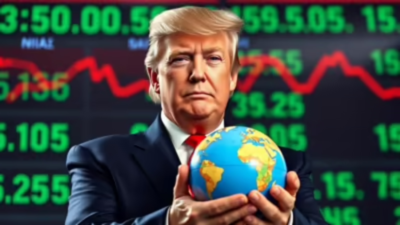Oil prices spike on Trump’s threat to Iran, then level off, Asian equities slip amid geopolitical jitters

Oil prices steadied on Wednesday following a sharp surge the previous day, triggered by fears of escalating US involvement in the ongoing Israel-Iran conflict. The spike came after US President Donald Trump issued aggressive statements demanding Iran’s “unconditional surrender” and suggesting possible support for Israeli strikes on Iranian nuclear and military sites.As Iran and Israel entered a sixth consecutive day of missile exchanges, Trump left the G7 Summit in Canada early, stating he sought a “real end” to the hostilities rather than a mere ceasefire. In a series of posts on his Truth Social platform, he warned Iran against targeting US interests and claimed knowledge of the location of Iran’s Supreme Leader, Ayatollah Ali Khamenei..”We know exactly where the so-called ‘Supreme Leader’ is hiding. He is an easy target, but is safe there. We are not going to take him out (kill!), at least not for now,” he wrote. These remarks pushed oil prices more than 4% higher on Tuesday amid fears that an escalation could disrupt crude supplies, especially through the Strait of Hormuz, a strategic waterway responsible for around 20% of global oil transport, reported AFP.Analysts warned that any strike on Iranian nuclear sites could have severe regional consequences. “Washington’s refuelling jets are already en route, and if Fordow gets hit, expect the Strait of Hormuz to become a maritime minefield, Houthi drones to swarm Red Sea shipping lanes, and every militia from Basra to Damascus to light up American forward outposts,” said Stephen Innes of SPI Asset Management.Despite a slight pullback in oil prices on Wednesday, markets remain volatile. Asian equities mirrored investor anxiety: Hong Kong, Shanghai, Singapore, Sydney, Manila, and Jakarta all posted losses, while Tokyo, Seoul, and Taipei saw modest gains.Wall Street’s performance also weighed on sentiment. Weak US retail sales and an unexpected drop in factory output for May raised fresh concerns about the resilience of the American economy.However, the disappointing data bolstered speculation that the Federal Reserve may consider cutting interest rates later this year. While the Fed is expected to hold rates steady at the conclusion of its policy meeting Wednesday, investors are closely watching for revisions in its growth and inflation outlook amid growing geopolitical and economic uncertainties.KPMG senior economist Benjamin Shoesmith noted that the Fed would likely be cutting rates already were it not for the unpredictability surrounding tariffs and tensions in the Middle East.





